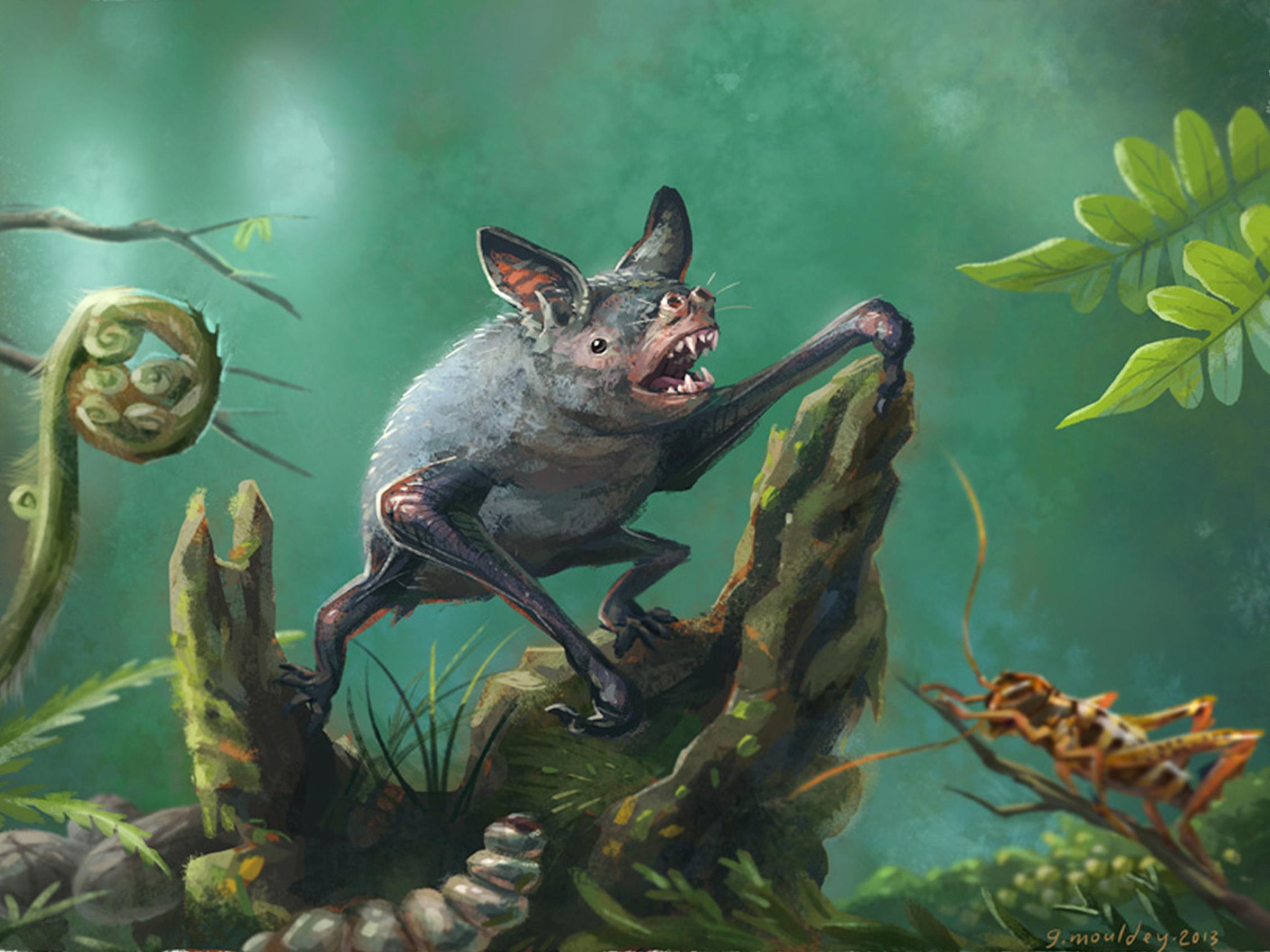The Independent's journalism is supported by our readers. When you purchase through links on our site, we may earn commission.
Giant extinct burrowing bat unearthed in New Zealand by palaeontologists
Discovery highlights the diversity of life that has been lost from the island nation

Palaeontologists have discovered teeth and bones belonging to an ancient species of burrowing bat.
The species, named Vulcanops jennyworthyae, inhabited New Zealand around 16 million years ago.
Burrowing bats are a unique group of mammals only found in New Zealand.
These animals not only fly, but crawl along the ground too, and are equipped with specialised claws that enable them to do so.
Vulcanops is the biggest burrowing bat ever found – although it still only weighed around 40 grams.
The finding was described in the journal Scientific Reports.
“Burrowing bats are more closely related to bats living in South America than to others in the south-west Pacific,” said Professor Sue Hand, the first author of the study describing the new species, and a palaeontologist at the University of New South Wales.
Specifically, Prof Hand said burrowing bats such as Vulcanops are related to vampire bats.
However, unlike its blood-feeding cousins, the teeth of this new species suggest it consumed plant material as well as small creatures.
The scientists said the discovery served as a reminder of the diversity of life that has been lost from New Zealand.
“These bats, along with land turtles and crocodiles, show that major groups of animals have been lost from New Zealand,” said study co-author Professor Paul Scofield, of Canterbury Museum.
“They show that the iconic survivors of this lost fauna – the tuataras, moas, kiwi, acanthisittid wrens, and leiopelmatid frogs – evolved in a far more complex community that hitherto thought.”
Many bats used to inhabit New Zealand, but climate fluctuations are thought to have led to the ultimate demise of all but two species, which still survive today.
While the nation is still home to a diverse array of bird species, the two remaining bats are the only mammals to still inhabit the island that were not introduced by humans.
Join our commenting forum
Join thought-provoking conversations, follow other Independent readers and see their replies
Comments